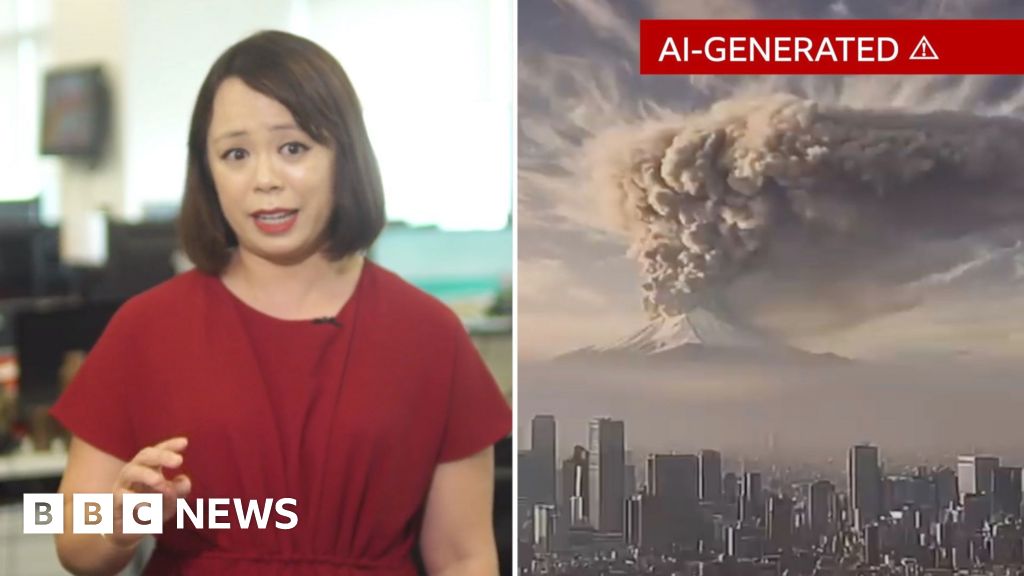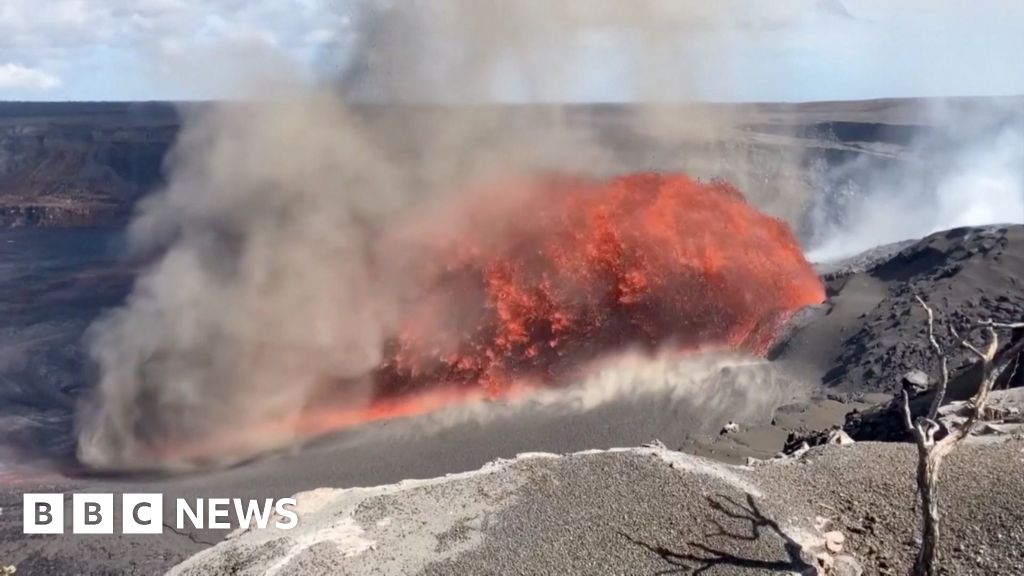The swarm of tens of thousands of earthquakes near the Greek island of Santorini earlier this year was triggered by molten rock pumping through an underground channel over three months, scientists have discovered.
They used physics and artificial intelligence to work out exactly what caused the more than 25,000 earthquakes, which travelled about 20km (12 miles) horizontally through the Earth's crust.
They used each of the tremors as virtual sensors, then used artificial intelligence to analyse patterns associated with them.
One of the lead researchers, Dr. Stephen Hicks from UCL, said combining physics and machine learning in this way could help forecast volcanic eruptions.
What happened in Santorini?
The seismic activity started to stir beneath the Greek islands of Santorini, Amorgos, and Anafi in January 2025. The islands experienced tens of thousands of earthquakes - many of which were over magnitude 5.0 and could be felt.
Many tourists fled, and locals feared that the nearby underwater volcano, Kolumbo, might be about to erupt - or that this was a seismic prelude to a larger earthquake, like the devastating, magnitude 7.7 quake that struck the same region in 1956.
The scientists, who published their findings in the journal Science, created a 3D map of the Earth around Santorini. They then mapped the evolving patterns of seismic activity of each tremor and the movement and stress in the crust. This resulted in a detailed model of exactly what drove this months-long seismic swarm.
The team found that the event was driven by the horizontal movement of magma - from beneath Santorini and the Kolumbo volcano - through a 30km channel that is more than 10km beneath the seafloor.
The researchers estimated that the volume of magma that moved through the crust could have filled 200,000 Olympic-sized swimming pools. These magma intrusions, as they are known, smashed through layers of rock, triggering thousands of tremors.
Lead author on the study, Anthony Lomax, a research geophysicist who develops scientific software to analyse seismic activity, explained: The tremors act as if we had instruments deep in the Earth, and they're telling us something.
[When we analyse] the pattern those earthquakes make in our 3D model of the Earth, it matches very, very well what we expect for magma moving horizontally.
Does this mean the Santorini unrest is over?
For now, the researchers say, it appears to be over.
The magma remained quite deep - more than 8km depth - in the crust, explained Dr. Hicks. We know that magma can ascend and erupt at the surface in a matter of hours to days, but because the activity has now died down, we can be almost certain that the melt eventually got stuck and cooled down deep in the crust.
Volcanoes, though, can enter prolonged phases of unrest and unpredictability that can last many years. Recent volcanic activity in south-west Iceland has demonstrated that.
And these researchers say using AI, in combination with the fundamental physics of how the Earth's crust moves and responds to stress, could transform the ability to monitor, understand and even forecast volcanic activity. This could help keep people in seismically active parts of the world safe.
Ultimately, this could be used as a forecasting tool, explained Dr. Hicks. Whenever we see a cluster of earthquakes, that is data that can be used to work out the most likely cause.






















